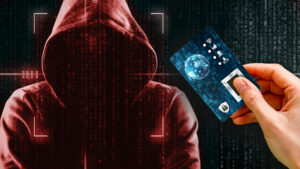Recovery procedures that maintain trust without reverting to weak passwords or vulnerable shortcuts. No weak links.
Biometrics
Biometric authentication systems, while highly secure and convenient, must address the reality that not 100% of all users can be consistently verified through a single biometric modality. Factors such as injury, age, or environmental conditions can temporarily or permanently prevent successful fingerprint recognition. To maintain both usability and security, systems require carefully designed, trusted fallback mechanisms that do not weaken overall protection.
Fingerprinting
Fingerprint recognition remains the most widely used biometric method worldwide due to its reliability, uniqueness, and deliberate (user controlled) user interaction. Nevertheless, a small fraction of individuals—approximately 0.1%—cannot use fingerprints due to genetic conditions, skin damage, or amputations. Others may experience temporary issues such as bandaged hands, minor injuries, or skin dryness. These users must be provided with alternative biometric options or supervised fallback authentication that maintains full system integrity.
Operation
For large-scale deployments, reliability depends on high-quality sensors with sufficient surface area and resolution, combined with certified algorithms capable of handling variable finger conditions. Supervised enrollment by trained officers ensures proper selection and registration of usable fingers while identifying disqualified users. A short user briefing during enrollment helps address common issues like dry or sweaty fingers, significantly improving success rates.
Fallbacks
Fallback mechanisms should never compromise the system’s security baseline. Traditional knowledge-based methods such as PINs or passwords introduce vulnerabilities that attackers can exploit.
The APPSCARD solution mandates users to enroll multiple fingers, ideally both thumbs and at least one index finger. If one fails due to injury or temporary damage, another can be used seamlessly. Systems should allow multiple verification attempts before fallback engagement.
For non-enrollable users, alternative biometric modalities—such as facial recognition —can provide a secure secondary option.
APPSCARD cards are targeted to incorporate face verification, performing secure on-card matching of digitally signed biometric data from external cameras. This maintains the cryptographic assurance of the BSoC while expanding accessibility.
Summary
In conclusion, trusted fallback design is essential for reliable, inclusive, and secure biometric authentication. Security-sensitive systems must avoid insecure knowledge-based fallbacks, rely on supervised multi-finger enrollment, and consider secondary biometrics to ensure every legitimate user can be verified—without ever introducing exploitable backdoors. Fallbacks due to false rejects can be minimized with a government grade sensor and algorithm.





